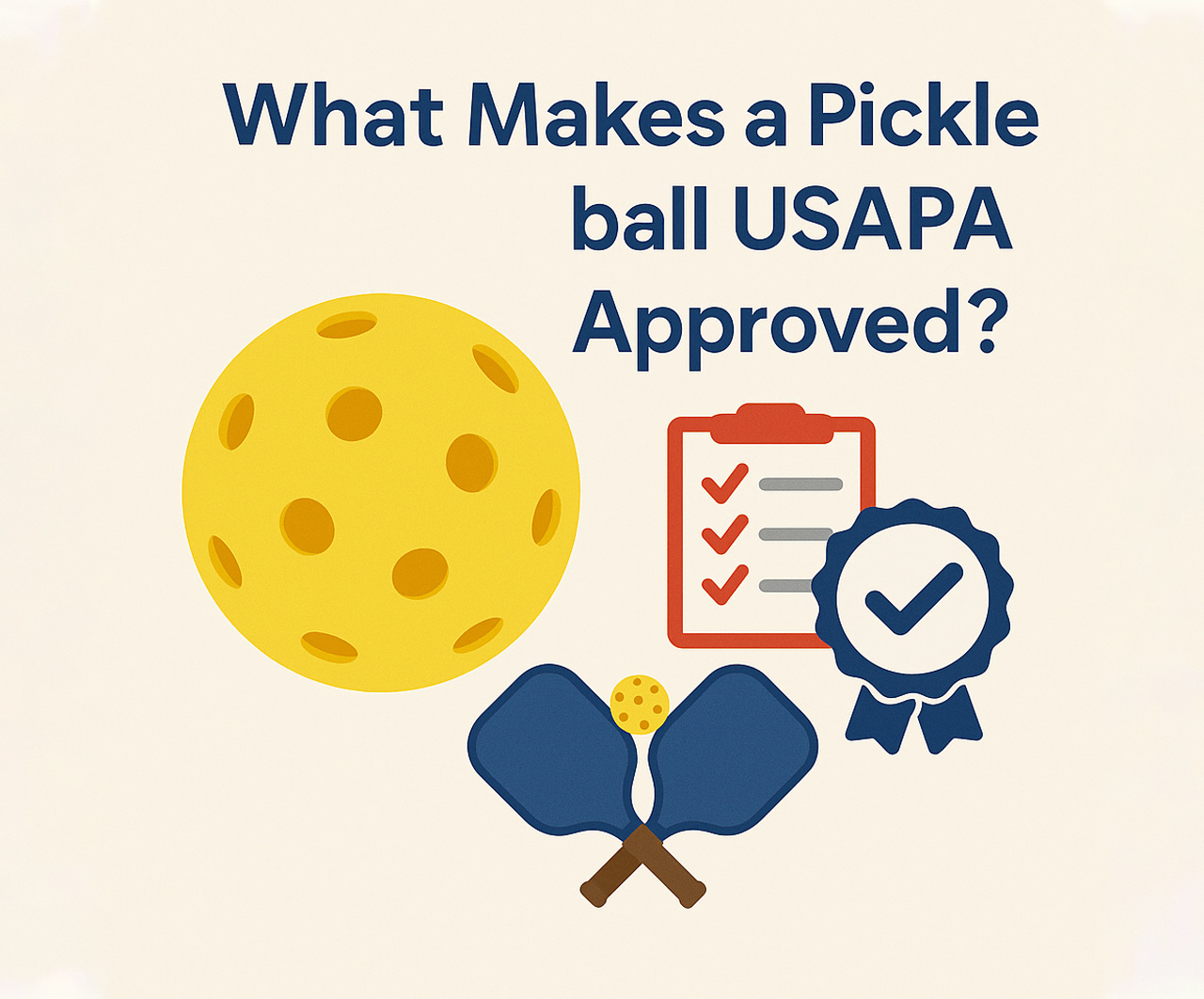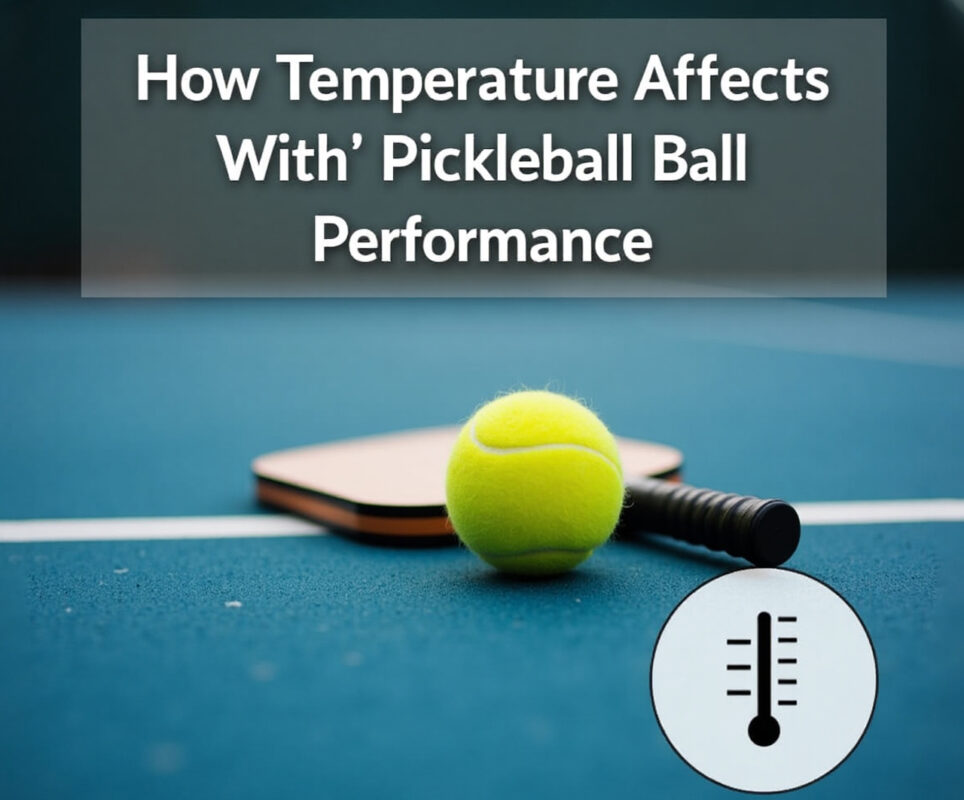Pickleball has exploded in popularity, and as more players join the game, the demand for high-quality, standardized equipment increases. One of the most critical pieces of gear in the sport is the pickleball itself. But not just any ball will do—if you want to play in official tournaments or ensure consistency in your game, you need a USAPA approved pickleball ball. But what exactly does that mean? Let’s explore the specifications, testing process, and importance of using a ball that meets USA Pickleball Association (USAPA) standards. Know more..
The Official Requirements for a USAPA Approved Pickleball Ball
To be officially sanctioned for tournament play, a pickleball must meet several specific criteria set forth by USAPA. These cover aspects such as material, size, weight, bounce, and flight characteristics.
1. Material and Construction
- Must be made from a durable, molded material.
- The surface must be smooth and free of excessive texture.
- Can have a slight seam, but it should not impact performance.
- The ball must be uniform in color, with only branding or manufacturer markings allowed.
Durability is crucial, as pickleballs are subjected to frequent impacts. Inferior materials can lead to cracking, warping, or inconsistent play. Manufacturers often test various polymer blends to ensure longevity while maintaining the correct weight and balance.
2. Size and Weight Regulations
A USAPA approved pickleball ball must adhere to these strict dimensions:
- Diameter: Between 2.87 inches and 2.97 inches.
- Weight: Between 0.78 ounces and 0.935 ounces.
These regulations ensure consistency in gameplay and fair competition across different brands and models. Players rely on uniformity to maintain their control and precision, particularly during competitive play.
3. Hole Design and Placement
- A pickleball must have between 26 and 40 circular holes.
- Hole patterns differ for indoor and outdoor play:
- Indoor balls typically have larger holes for better control.
- Outdoor balls have smaller holes to counteract wind resistance.
The placement and size of these holes significantly affect aerodynamics. Outdoor balls need to resist strong gusts, while indoor balls must allow for more finesse and accuracy in play.
4. Bounce and Hardness Standards
- When dropped from a height of 78 inches onto a concrete surface, the ball should bounce between 30 and 34 inches.
- It must pass compression tests to ensure the correct level of hardness.
A ball that is too soft may deform easily and lose responsiveness, while one that is too hard can make gameplay uncomfortable and lead to excessive wear on paddles. USAPA ensures all approved balls meet a balance between these extremes.
The USAPA Testing and Approval Process
For a pickleball ball to be officially recognized by USAPA, manufacturers must submit samples for a rigorous approval process. Here’s how it works:
1. Submission for Testing
Manufacturers send eleven (11) balls to be evaluated by certified testing facilities. USA Pickleball collaborates with National Technical Systems (NTS) to conduct these tests.
This step ensures consistency across different production batches. Since minor changes in material composition or manufacturing processes can impact a ball’s performance, every new batch must be tested before approval is granted.
2. Performance Testing
- Aerodynamics and Flight Stability: Ensuring the ball moves consistently in different playing conditions.
- Durability Tests: Balls are subjected to repeated impacts to measure longevity.
- Temperature Testing: The ball must maintain performance across various weather conditions.
Outdoor balls, in particular, must perform well under extreme heat and cold, as temperature fluctuations can alter material integrity. Some manufacturers also conduct internal tests in varying humidity levels to replicate different playing environments.
3. Approval and Listing
If the ball meets all standards, it is added to the USAPA Approved Equipment List. Players can check this list online to verify which balls are tournament-eligible.
Why Does USAPA Approval Matter?
Using a USAPA approved pickleball ball ensures:
- Fair Play: Standardized specifications mean consistent performance.
- Durability: Approved balls are built to last.
- Tournament Eligibility: Only approved balls can be used in USAPA-sanctioned events.
- Enhanced Gameplay Experience: Knowing that every ball performs the same way prevents unexpected variances that could affect strategy and technique.
Pickleball has grown into a competitive sport with leagues and professional circuits. Using the right equipment ensures a level playing field, where skill—not equipment differences—determines the outcome.
How to Check If Your Pickleball Ball is USAPA Approved
- Look for the USAPA logo on the ball.
- Check the manufacturer’s website for certification.
- Visit the official USAPA equipment database here.
USAPA regularly updates its list, so it’s essential to verify before purchasing a new ball. Some balls that were once approved may lose their certification if they fail subsequent testing or if the manufacturer changes the design.
Choosing the Right Ball for Your Game
While USAPA approval is necessary for tournament play, recreational players should also consider these factors when choosing a ball:
- Indoor vs. Outdoor Play: Choose balls specifically designed for your playing environment.
- Weather Conditions: If you play in extreme heat or cold, look for balls designed to withstand those conditions.
- Durability: Higher-quality balls last longer, saving money in the long run.
- Personal Preference: Some players prefer a softer ball for better control, while others like a firmer ball for faster play.
The Evolution of Pickleball Balls
The earliest pickleball balls were adapted from wiffle balls, but as the sport evolved, so did the ball designs. Modern advancements include improved polymer blends for better longevity and engineered hole patterns for more precise aerodynamics. Today’s USAPA approved balls reflect years of innovation aimed at optimizing gameplay for all levels of players.
Expert Tips for Extending the Life of Your Pickleball Balls
- Store balls in a cool, dry place to prevent warping due to heat exposure.
- Rotate balls regularly to distribute wear evenly.
- Use different balls for practice and competition to maintain peak performance for important matches.
- Clean balls periodically to remove dirt buildup that can affect flight characteristics.
Final Thoughts
Not all pickleball balls are the same. If you’re serious about the game, whether playing casually or competitively, it’s essential to use a USAPA approved pickleball ball. Meeting stringent material, size, bounce, and durability standards ensures you get the best performance on the court.
Using a non-approved ball can lead to inconsistent play, making it difficult to develop skills effectively. With the sport’s growing popularity, ensuring fair play is more important than ever.
For an updated list of approved pickleball balls, visit the USAPA website. Whether you’re a beginner or a seasoned pro, the right ball can make all the difference in your game.


